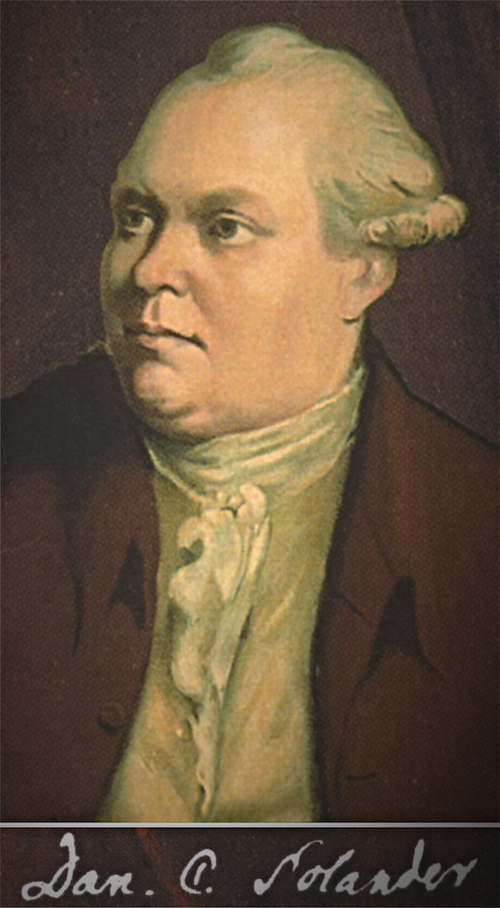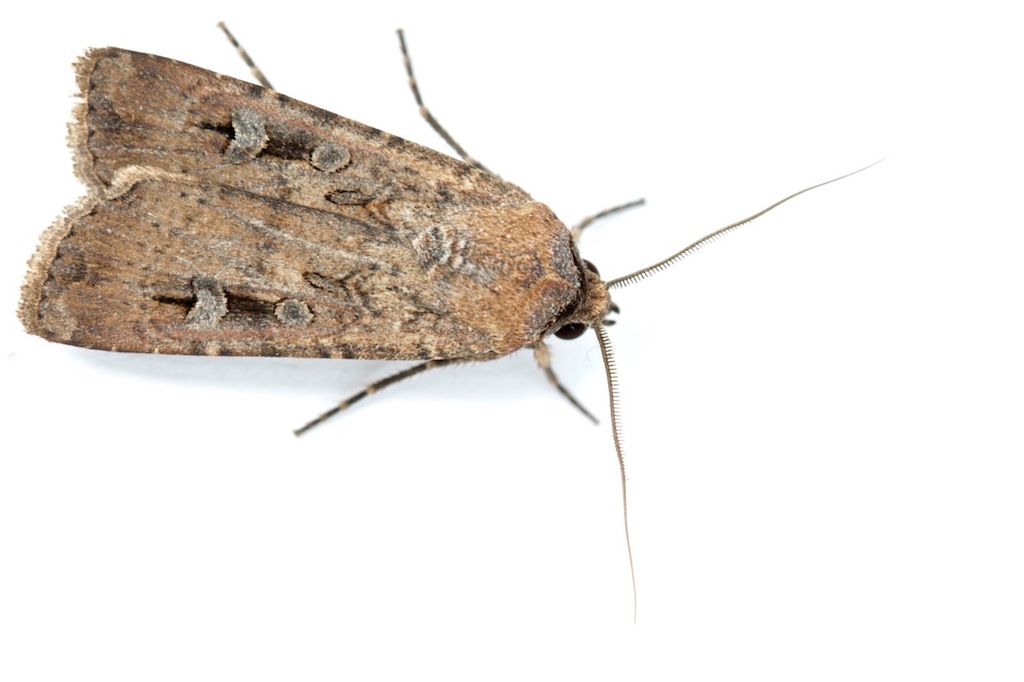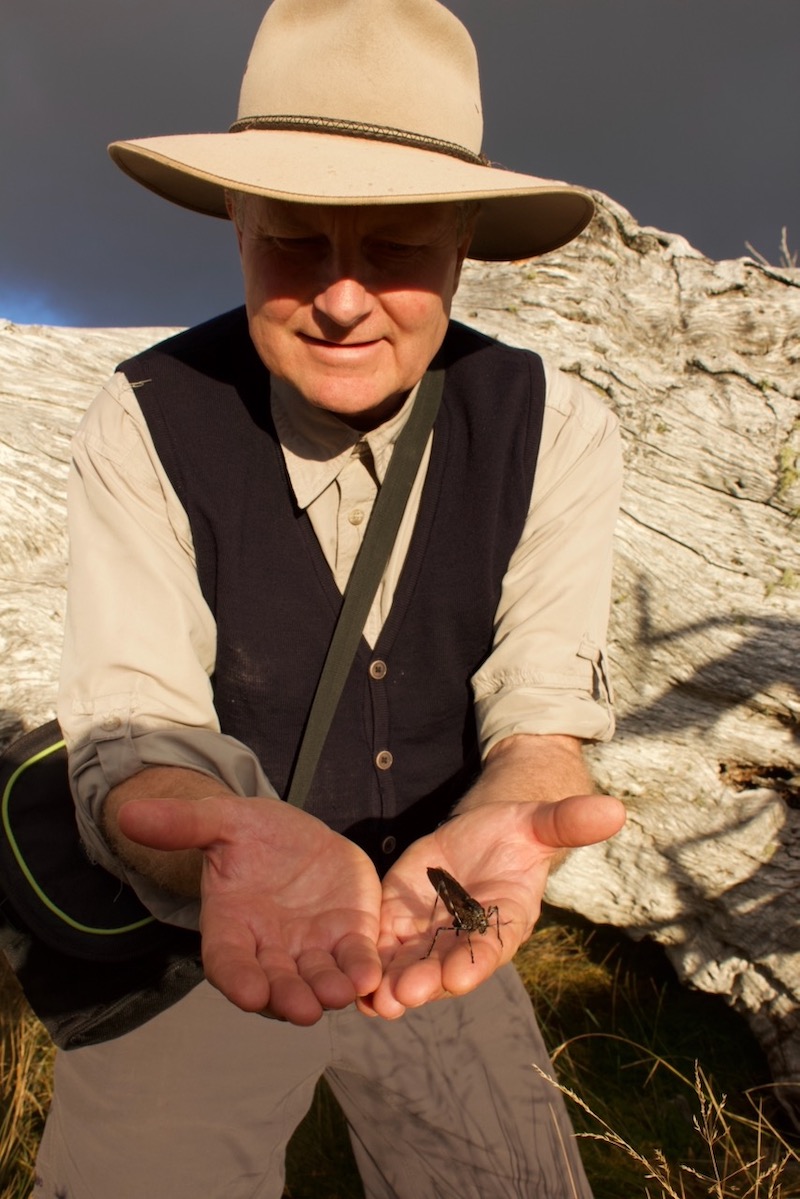As a fifth-generation Australian now living in Sweden, I feel a very special connection to the great Dr. Daniel Solander – botanist, zoologist, adventurer and Linnaeus' apostle. Even though he and I were born 230 years and 15,000 kilometres apart, we have strangely shared similar passions and destinies. Solander, the Piteå-born naturalist and me, the Sydney-born neuroethologist. Both destined to travel to the opposite ends of the world to follow our passions, and each as curious about the natural world as the other.
As a small boy living in a rainforest on the extreme outskirts of Sydney, I was surrounded by every imaginable form of life. The towering eucalypts around our house were filled with clouds of parrots, loud and brazen and beautiful. Perfectly camouflaged, but no less conspicuous or beautiful, tiny fragile bottle-green bellbirds called from the deep green shadows of tree ferns, literally like the clear “dong” of a tiny bell. Everywhere the bush would come alive with their pealing – loud and closer now, and then suddenly softer and further away. Years later, when I rang my parents from my student room in a noisy and traffic-mired Sydney, I could hear them in the background, and the pangs of longing and homesickness would follow. Summer time brought Christmas holidays, achingly hot afternoons and deafening heaving waves of cicadas in the trees. Every waking hour was spent exploring the forest, making tracks, swinging on long powerful vines suspended from unknown branches far above, walking barefoot along cool fern-edged creeks looking for yabbies (crayfish) and building makeshift hideouts in the undergrowth (which in Australia we call “cubbies”). It was a perfect childhood.
But clashing with the wildlife was inevitable. We regularly returned home with our shoes filled with leeches, their perfect anaesthetic having dulled their insistent boring into vulnerable skin between our toes to suck blood. Having had their fill, they lazed in our shoes as blood flowed unabated from their tiny wounds until our socks were sopping wet with our own body fluids. I still remember my mother’s yells from down the hall as she discovered the red footprints on the carpets… At night, the world’s deadliest spiders – the Sydney funnel web – emerged from their inch-wide silk-lined burrows in our lawn in search of mates. Large, black-furred and fanged, a single bite can kill an adult in about two hours, convulsing and vomiting. Luckily, being nocturnal, we saw them rarely, and when I was a teenager a much awaited antivenom was found. But for me, as a wide-eyed little boy, the myriad forms of insects were what really captured my attention. Shining iridescent Christmas beetles, leaf green praying mantises swaying from side to side before bridging the gap between two fingers, mounds of huge and terrifying bull ants (whose painful stings I knew only too well) and the alien features of massive leaf insects with heads like chokoes. This childhood rainforest chose my destiny.

Exactly 200 years earlier, about 100 km further south, another much larger destiny was unfolding. The great British navigator, Captain James Cook, anchored his research vessel, His Majesty’s Bark
Endeavour, in a broad sandy bay near the waterside runways of today’s Sydney International Airport, there going ashore to claim the country of New Holland, as Australia was then known, for Great Britain (thereby initiating the tragic and merciless dispossession of Australia’s indigenous peoples). With him on that historic April day in 1770 was Daniel Solander and his fellow naturalist, the young Joseph Banks. I often try to imagine the sheer thrill that these two curious men must have experienced when they encountered plants and animals that no European had ever previously seen. It must have been the kind of thrill that the NASA control room experiences today when they receive images back from the surface of Mars revealing new vistas for the very first time. And it is certainly the same thrill that I experience every time we discover something amazing about the insects that we study in our own research. Solander and Banks spent several days in the bush behind the beach where the
Endeavour laid moored and they collected enormous numbers of samples of plants and animals, later to be described using the Linnaean system of classification that Solander was entrusted to promote. In recognition of these efforts, Cook named this cove Botany Bay, and a nearby rocky promontory jutting into the sea, Cape Solander.
As an 8 year old in 1970 I had never heard of Daniel Solander. But with the lively 200th anniversary celebrations going on around me, his name – as well as those of Cook and Banks, and the
Endeavour artist Sydney Parkinson – were becoming almost household names. To celebrate, my teacher organised a bus trip for my class to the very site of Cook’s landing at Botany Bay – today marked by a tall imposing sandstone obelisk – a visit that is etched vividly into my memory, and instilled within me the wonders of exploration. Small portraits of Solander and Banks, printed on the impressive series of postage stamps that were newly minted for the occasion, suddenly had meaning. Solander went on to scientifically describe many iconic Australian plants and animals for the first time, including the kangaroo. Solander – a Swede – is thus a towering foundational figure in Australian biological science, and is well known throughout the country.
My own journey in reverse – from Australia to Lund in Sweden – occurred in 1990. I arrived to take up my first position post-PhD, in the Department of Zoology, working on the visual optics of insect eyes, a speciality I shared with the man who invited me to come – Dan-Eric Nilsson. As often happens in academia, one offer led to another and opportunities to stay in Lund arose that were impossible to refuse. Before long I was permanent, and not long after that was appointed Professor of Zoology, a position I still hold today. After more than 30 years in Sweden I have never looked back, and I have a deep love of my adopted country, and of the charming old town of Lund where I live. So I now have two homes and two citizenships – one of each in each country, but unlike Solander, I can traverse between the two of them in a mere day. It feels almost uncanny that the homeland of a man who is indelibly enshrined within the history of Australian biological science, is now my home as well. And that his teacher, the great Carl Linnaeus, was the student of the foundation professor of my department in Lund – Dr. Kilian Stobaeus. As a student, Linnaeus rented a room with Stobaeus, in a book-filled house next to the towering Romanesque Cathedral of Lund, a stone’s throw away from where my own house lies.

Australian postage stamps from 1970 marking the bicentennial of the arrival of the Endeavour in Botany Bay and the discovery of the east coast of Australia. Banks and Solander feature on the stamp devoted to science.
Thirty years later, in 1759, Solander himself visited Lund, during a longer stay in Skåne that preceded his permanent departure for England. Our destinies, although hundreds of years apart, seem strangely entwined.
Like Solander, I now travel to Australia in the guise of a biologist. For the last decade I’ve been entirely entranced with a small, modestly-coloured moth, that despite its humble appearance, possesses an incredible navigational ability. Although Solander himself would have never encountered this moth at Botany Bay, had he known about its remarkable behaviour I am certain that he would have been just as fascinated as I am. This moth – known as the Bogong moth – is an iconic insect which is well known to most Australians. Like its more flamboyant cousin, the Monarch butterfly of North America, this moth makes a spectacular annual migration. Travelling from all over southeast Australia, they head towards a very small number of alpine caves in the country’s highest mountains, here aggregating in gigantic numbers. Flying in their billions by night, each moth travels to a destination it has never previously visited, uncannily choosing the right direction and covering around 1000 km to get there. Exactly how they manage this tremendous feat, with a brain smaller than a grain of rice, is the question we hope to answer. So far we have discovered that the Bogong moth combines two amazing compasses. Firstly, it is able to sense the Earth’s magnetic field and use it to steer migration in the right direction. Secondly, it is additionally able to use the starry night sky as a true compass for navigation – the first invertebrate animal known with this ability. Only humans, and some species of night migratory birds, were previously known to have the ability to use the stars for navigation, making the Bogong moth a truly special insect.
As the
Endeavour ploughed across the southern oceans of the world during its voyage of discovery, racing the French to claim the uncharted and hardly-known territories of New Holland, Captain James Cook was no doubt relying on his sextant to calculate accurate bearings from the stars. Little did he know – or Solander or Banks – that in that great Southern Land to which he was heading, a tiny insect had been relying on the stars to navigate for millions of years. And whether it was the stars, or some other mode of fate and fortune that strangely tied our lives, Solander and I, despite being separated by hundreds of years, have shared a common and marvellous destiny – to cross the world between Sweden and Australia to unravel the glories of Nature.

The Bogong moth Agrotis infusa, an iconic Australian long-distance navigator. The male shown here is around 25 mm long. Photo: Ajay Narendra.










